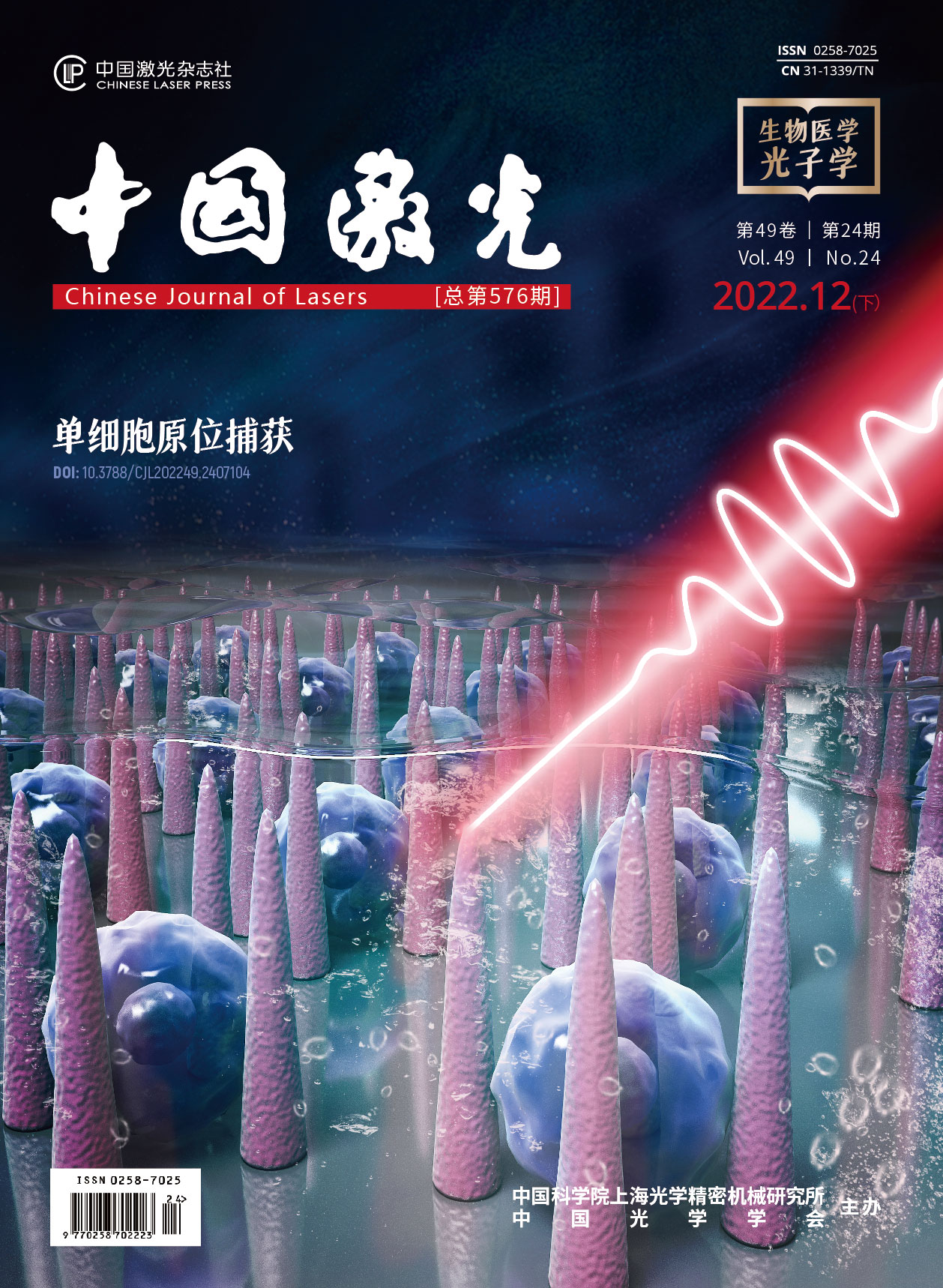用于成像性能测试的荧光发光模拟系统  下载: 677次
下载: 677次
Fluorescence molecular imaging is widely used in clinical practice. Different hardware and software designs in different fluorescence imaging systems lead to differences in imaging performance between instruments. However, unlike radiographic imaging, fluorescence imaging currently has no mature specifications or standards to test the performance of imaging instruments. Phantoms are tools used in standardized imaging performance testing and are commonly used in radiography. Unlike human tissues, phantoms have preset shapes and contrasts that simulate specific tissue parameters over time. These properties allow phantoms to be used to measure, evaluate, and confirm the performance of imaging instruments. In research on near-infrared fluorescent phantoms, fluorescent agents and quantum dots are used as samples for fluorescence imaging performance testing. However, owing to the different materials and preparation methods used in the samples, as well as the stability of the materials themselves, there is still no stable sample for accurately simulating the fluorescence spectrum as a standardized test tool. In this study, a fluorescence emission simulation system for simulating fluorescent samples is proposed. Imaging instruments can exhibit the same response as real fluorophores when imaging a fluorescence simulation system. Compared with traditional fluorescent agents, the fluorescence emission simulation (FES) system can more accurately simulate fluorescence emission characteristics in a stable manner.
In this study, we propose a fluorescent light-emitting system that uses an optical system to simulate fluorophores. First, according to the characteristics of the fluorescent agent, a simulation method for fluorescence excitation efficiency, spatial distribution, and fluorescence emission spectrum characteristics is designed such that the fluorescence imaging instrument has the same response as the real fluorescent agent when imaging the FES system. The system controls the intensity of the outgoing fluorescence according to the intensity of the detected excitation light, thereby simulating the fluorescence excitation efficiency of the fluorescent agent sample. The design of the optical entrance and exit based on the integrating sphere can simulate the spatial distribution of outgoing fluorescence. In this study, a spectral simulation method based on a linear filter LVF and liquid crystal display (LCD) is used, and based on this method, an improved least squares spectral fitting algorithm is designed to automatically simulate arbitrary fluorescence spectra.
The performance verification shows that the subspectra of the FEM system have linear additivity (Fig. 5), and the subspectrum satisfies a certain gray-transmittance relationship [Fig. 6(a)]. A grayscale transmittance curve of the sub-spectrum was obtained [Fig. 6(b)]. Functional verification of the system is realized by fluorescence emission simulation of ICG. The simulation of the fluorescence emission spectrum characteristics [Fig. 7(a)] and fluorescence excitation efficiency [Figs. 7(b)-(d)] of the ICG aqueous solution samples with different concentrations is performed using the FES system. The simulation system obtains the same test results as the fluorescent samples (Fig. 8), and compared with traditional fluorescent agents, the FES system more accurately simulates the fluorescence emission characteristics in a stable manner, which verifies the feasibility of the system as a standardized test tool.
In this study, a method for simulating fluorescent samples with an optical system is proposed. A programmable FES system is built and an optical system is used to simulate fluorescent agents for the standardization test of near-infrared fluorescence imaging performance. The FES system can simulate the fluorescence excitation efficiency, spatial distribution, and fluorescence emission spectrum characteristics of the fluorescent sample such that the fluorescence imaging instrument has the same response as the real fluorescent agent when imaging the FES system. A spectral simulation method based on a linear filter and liquid crystal display is also proposed and an improved least squares spectral fitting algorithm is designed, which can automatically simulate any fluorescence spectrum. Finally, based on the FES system, the fluorescence imaging sensitivities of different near-infrared fluorescence imaging instruments are tested and the test results of different instruments are compared. The test results show that compared with traditional fluorescent agents, the FES system can more accurately simulate the fluorescence emission characteristics in a stable manner, which verifies the feasibility of the system as a standardized test tool.
李晨梦, 邵鹏飞, 吴柄萱, 孙明斋, 姚鹏, 申书伟, 刘鹏, 徐晓嵘. 用于成像性能测试的荧光发光模拟系统[J]. 中国激光, 2022, 49(24): 2407204. Chenmeng Li, Pengfei Shao, Bingxuan Wu, Mingzhai Sun, Peng Yao, Shuwei Shen, Peng Liu, Xiaorong Xu. Fluorescence Emission Simulation System for Imaging Performance Testing[J]. Chinese Journal of Lasers, 2022, 49(24): 2407204.







